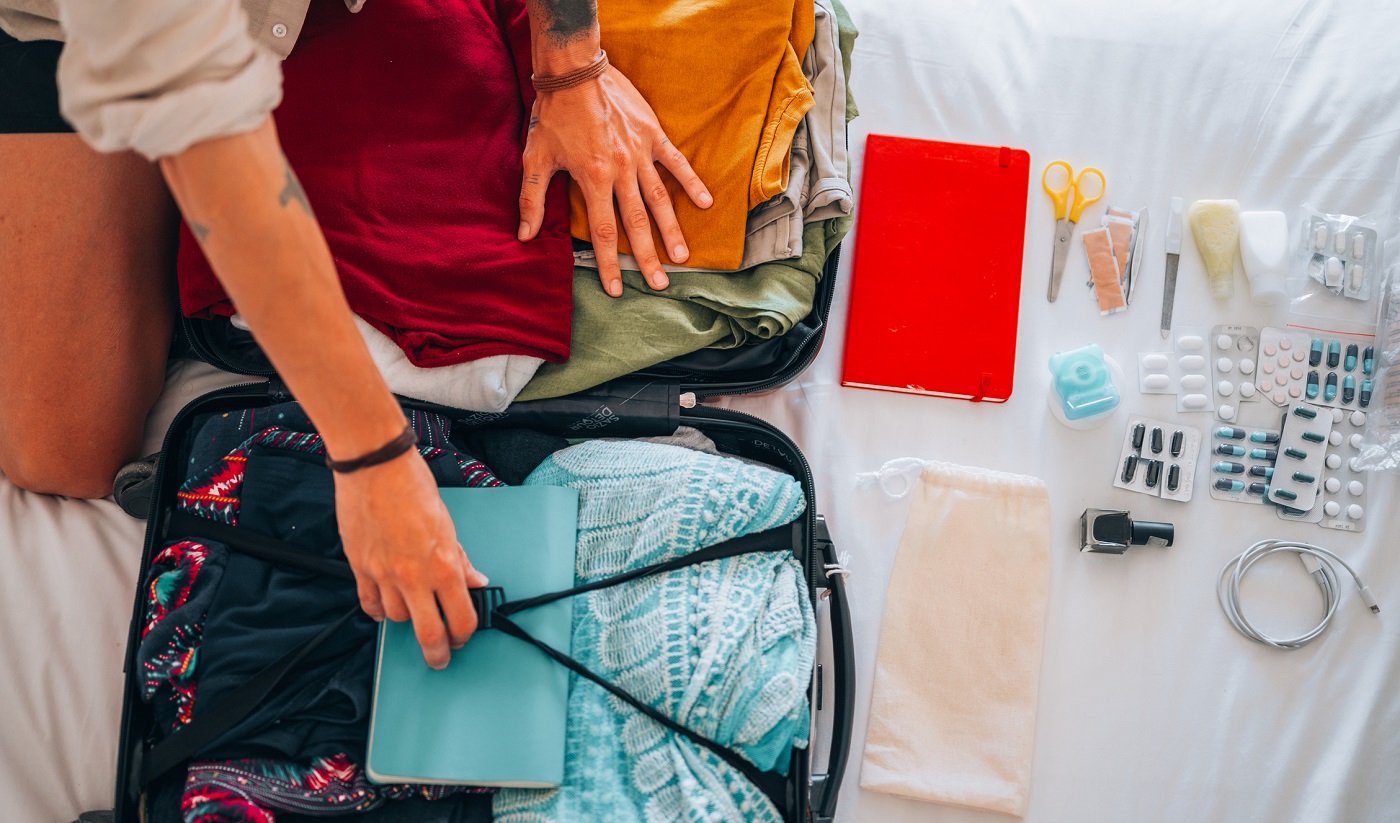Pack Smart

Prepare a travel health kit with items you may need, especially those that may be difficult to find on your trip.
If you have specific medical conditions, check with your healthcare professional for any additional items to consider bringing along. Be aware that some countries have restrictions on what medications you can bring with you, so check with the U.S. Embassy for the country you are traveling to.
The list below provides a wide range of items to consider including in your travel health kit. You may not need every item. What you pack depends on your destination and the health risks specific to that area. Check CDC’s Destination webpages to learn more about the health risks at your destination and what to pack.
Documents
Bring copies of these documents with you on your trip. Documentation requirements may vary by destination. Check your destination’s website to ensure your documentation is in the correct format (print or digital) and whether additional documentation is required. If possible, keep a print and digital version of each document with you during your trip.
- Copies of your passport and travel documents
- Contact card with the street addresses, phone numbers, and e-mail addresses of a family member or close contact in the United States
- Lodging information for your destination(s)
- Information for your healthcare professional(s) at home
- Copy of immunization records
- Proof of yellow fever vaccination (if required for your trip)
- Copies of prescriptions (medications, glasses, or medical supplies)
- Health insurance card and documents (including travel insurance)
- List of hospitals or clinics (including emergency services) in your destination(s)
- US embassy or consulate information for your destination(s)
Medicines
- Antacid
- Antibiotics, if prescribed by your healthcare professional, such as for travelers' diarrhea
- Antihistamine
- Antimalarial medicines, if prescribed by your healthcare professional
- Antivirals, if prescribed by your healthcare professional, such as for influenza (flu)
- Cough drops, cough suppressant, or expectorant (a medicine that helps loosen mucus)
- Decongestant
- Diarrhea medicine (such as Imodium or Pepto-Bismol)
- Laxative (mild)
- Motion sickness medicine
- Pain and fever medicine (such as acetaminophen or ibuprofen)
- Prescriptions, preferably in their original bottle
- Sedative or sleep aid (mild)
Supplies
- Condoms
- Diabetes testing supplies
- Disease-specific rapid tests
- Earplugs
- First-aid kit
- Glasses, contact lenses, contact lens solution, and hydrating eye drops
- Hand sanitizer (containing at least 60% alcohol) or antibacterial hand wipes
- High-quality masks
- Insect repellent (with an active ingredient like DEET or picaridin)
- Medical alert bracelet or necklace
- Sunglasses and hat
- Sunscreen (with UVA and UVB protection, SPF 15 or higher)
- Water purification tablets or filter
Additional Resources
- Check the Transportation Security Administration website for updates on permitted and prohibited items, including medicines and medical devices that you are allowed to carry onto an airplane.
- Some items may not be allowed in other countries. It is a good idea to check the Customs and Import Restrictions section of the U.S. Department of State Tips for Traveling Abroad.
- Enroll in the Department of State Smart Traveler Enrollment Program to get the latest safety updates and help in an emergency.